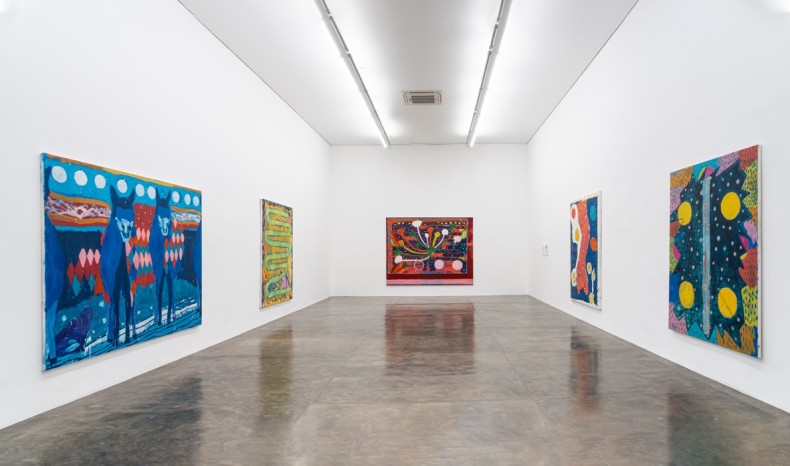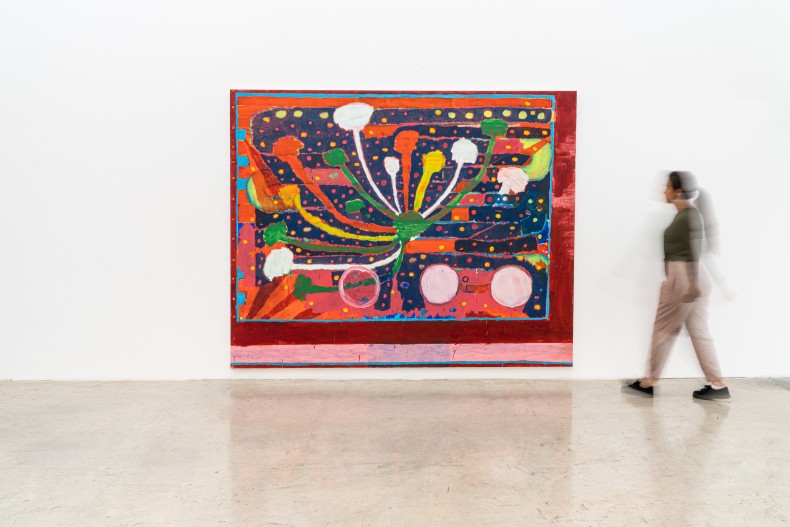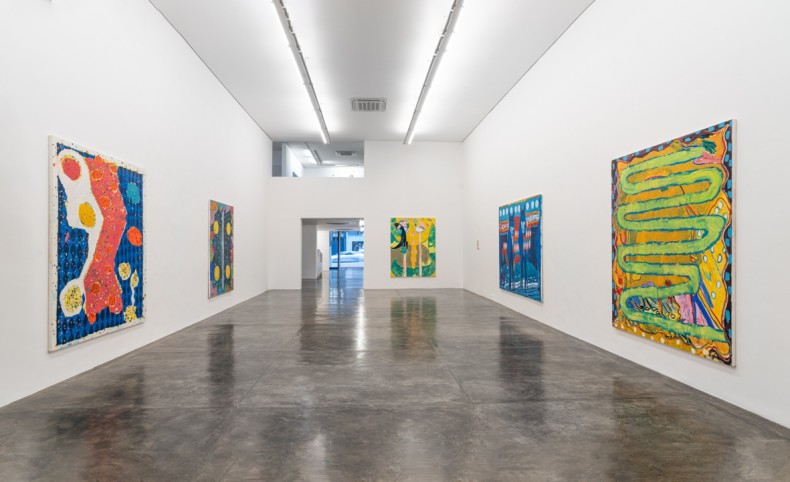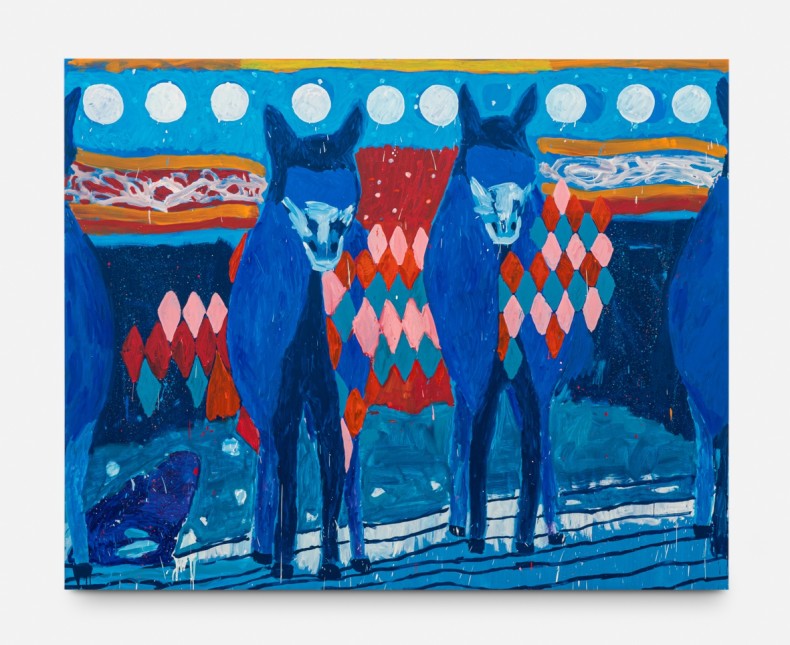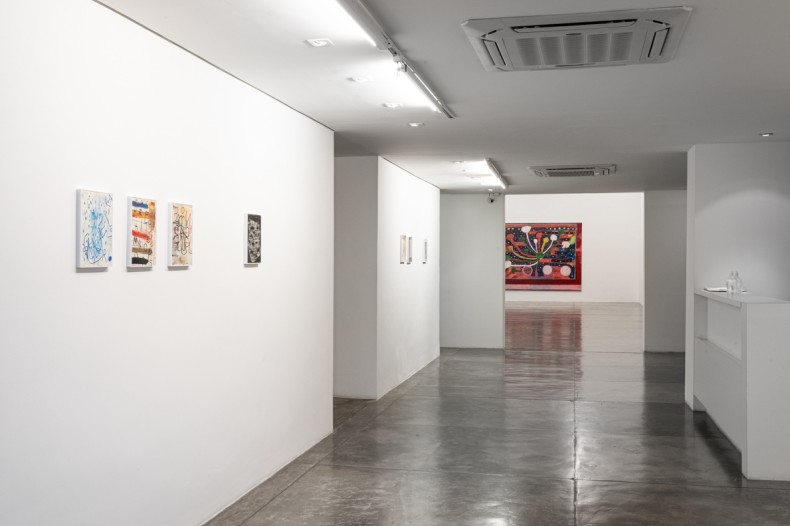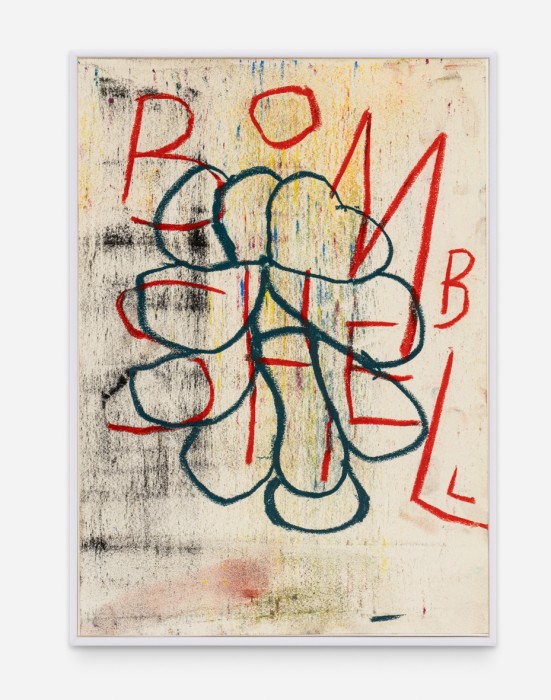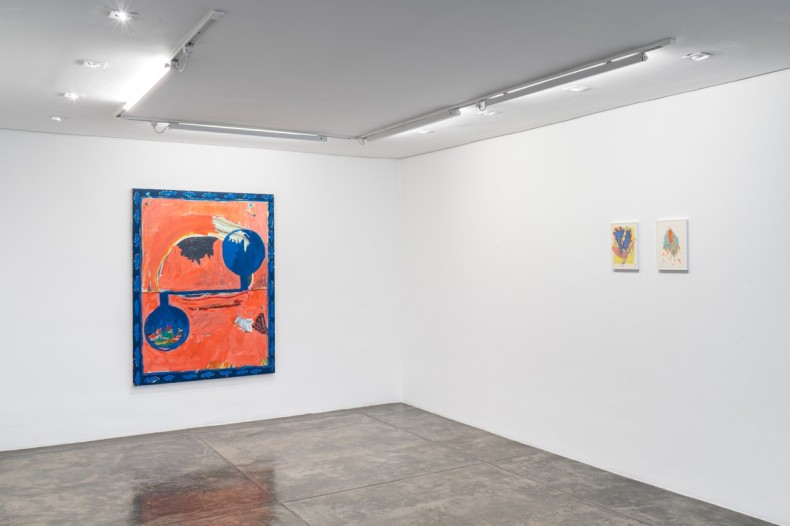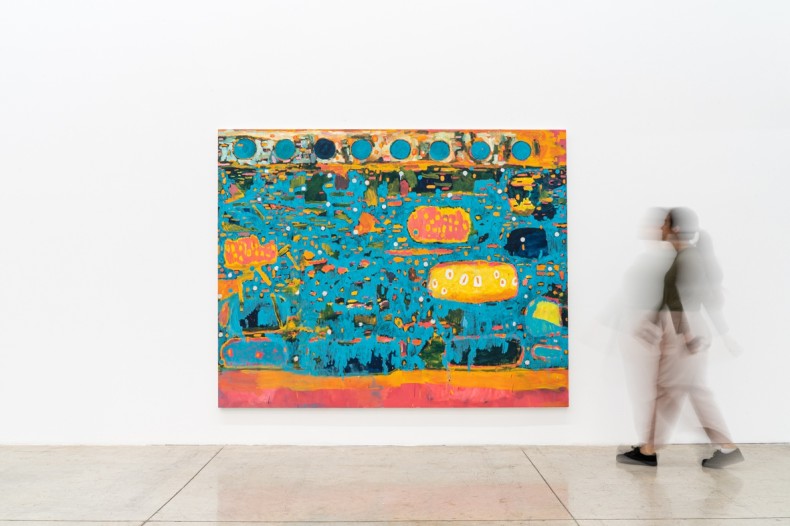While painting has reached the hopeful dynamism of its own poetic marginality, thus freeing itself from its epochal functions, painters have found an enviable freedom: they no longer carry the world on their shoulders.
Bruno Dunley is a painter: he is an essential protagonist amidst Brazil’s young generation of painters whose work has come to prominence in the beginning of the twenty-first century. His oeuvre’s complexity and richness—its variety and consistency—singularly stands out amongst this century’s emerging artists.
His work contains a fascinating repertoire of diagrams, wisely filtered through the thickness of pictorial images, as if the matter which makes image in the painting suspended in a limbo—in other words: un/worked—everything that the image’s schematic backbone can achieve as painting.
Dunley’s works emphasize these tensions. His most recent pieces offer an abundance of festive, serpentine, circular forms—a signature in Dunley’s oeuvre: achieving the diagrammatic dimension of painting through stains and strokes, rather than through colors and lines.
Open to what will come from within them, Dunley’s works emphasize a truth, which our world now saturated with multiplying ephemeral images would like to forget: that actually no painting can exhaust itself in the image.
Luis Pérez-Oramas
